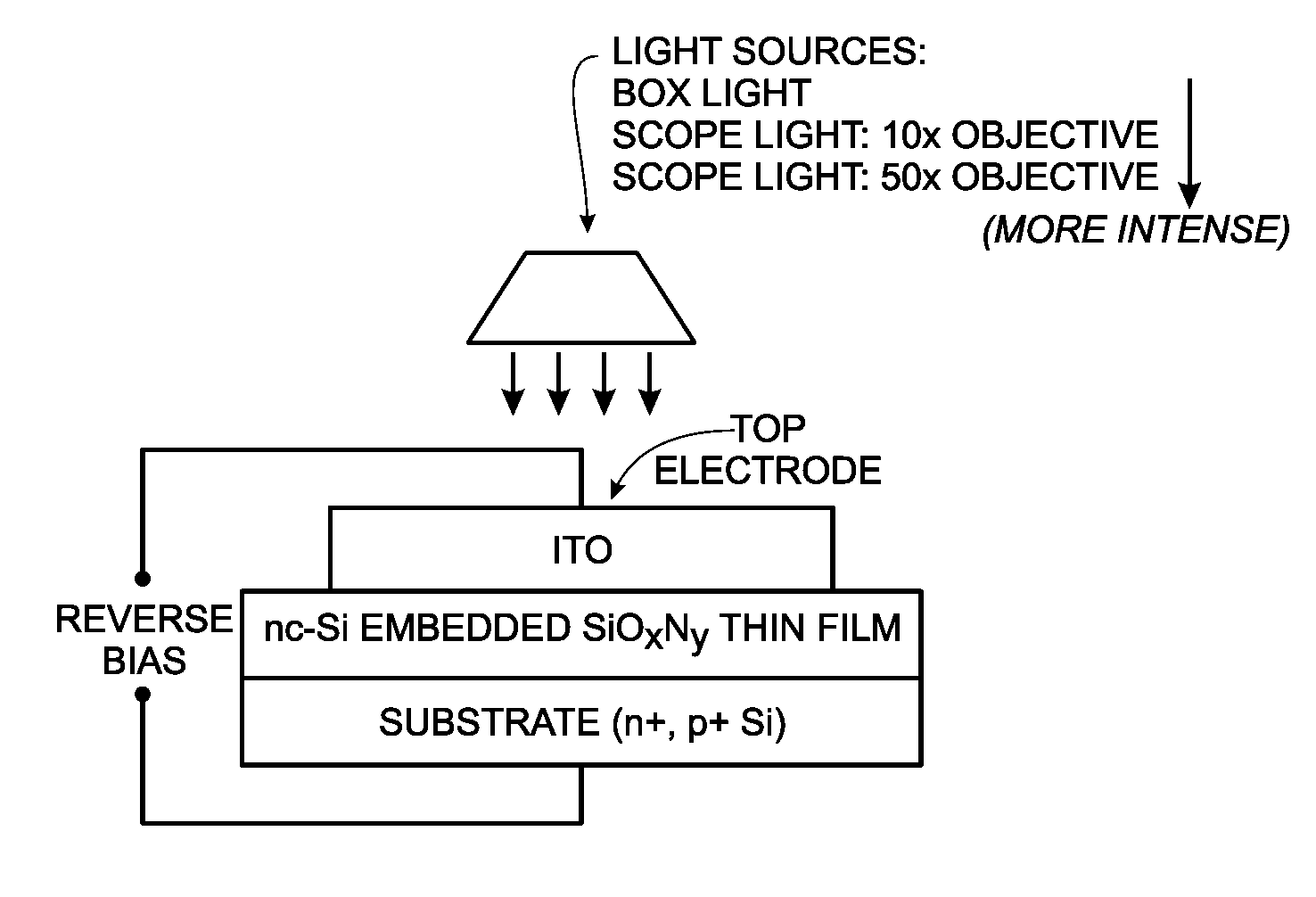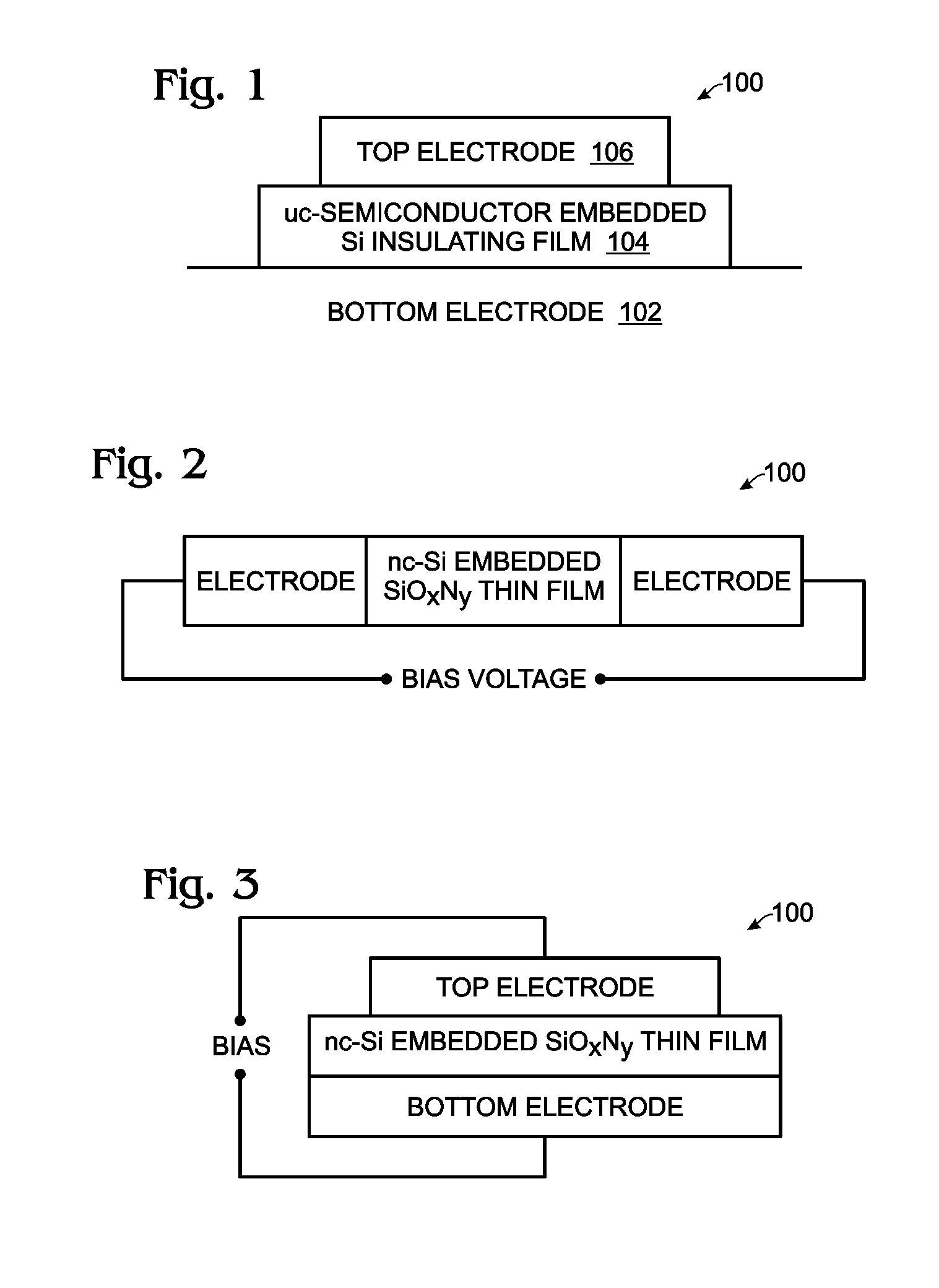Silicon Nanoparticle Embedded Insulating Film Photodetector
a silicon nanoparticle and photodetector technology, applied in the field of photodetectors, can solve the problems of inefficient materials for optoelectronic devices, inability to provide the wide range of optical dispersion characteristics required, and inability to achieve the wide range of optical dispersion characteristics of single thin film material, etc., to achieve high photocurrent, low capacitance, and high sensitivity-bandwidth product
- Summary
- Abstract
- Description
- Claims
- Application Information
AI Technical Summary
Benefits of technology
Problems solved by technology
Method used
Image
Examples
Embodiment Construction
[0030]FIG. 1 is a partial cross-sectional view of a photodetector employing a semiconductor nanoparticle embedded insulating film. The photodetector 100 comprises a bottom electrode 102, which may be a doped semiconductor, metal, or polymer. A semiconductor nanoparticle embedded Si insulating film 104 overlies the bottom electrode 102. The insulating film includes either N or C elements. In one aspect, the Si insulating film 104 is a non-stoichiometric SiOX1NY1 thin-film, where (X1+Y11>0). In another aspect, the Si insulating film 104 is a SiCX thin film, where X<1.
[0031]The semiconductor nanoparticles embedded in the Si insulating film 104 have a diameter in the range of about 1 to 10 nanometers (nm), and are made from either Si or Ge. The semiconductor nanoparticle embedded Si insulating film 104 exhibits a spectral response in a wavelength range of about 200 nanometers (nm) to about 1600 nm. A transparent electrode 106, such an indium tin oxide (ITO) or a thin metal, overlies the...
PUM
| Property | Measurement | Unit |
|---|---|---|
| Temperature | aaaaa | aaaaa |
| Diameter | aaaaa | aaaaa |
| Length | aaaaa | aaaaa |
Abstract
Description
Claims
Application Information
 Login to View More
Login to View More - R&D
- Intellectual Property
- Life Sciences
- Materials
- Tech Scout
- Unparalleled Data Quality
- Higher Quality Content
- 60% Fewer Hallucinations
Browse by: Latest US Patents, China's latest patents, Technical Efficacy Thesaurus, Application Domain, Technology Topic, Popular Technical Reports.
© 2025 PatSnap. All rights reserved.Legal|Privacy policy|Modern Slavery Act Transparency Statement|Sitemap|About US| Contact US: help@patsnap.com



